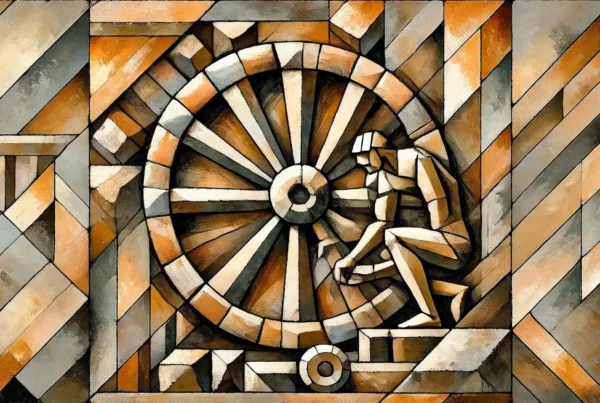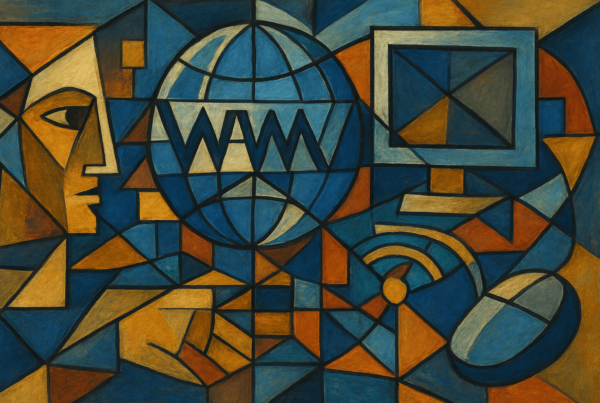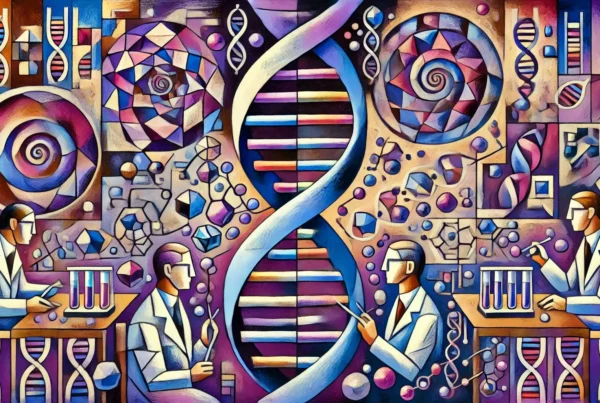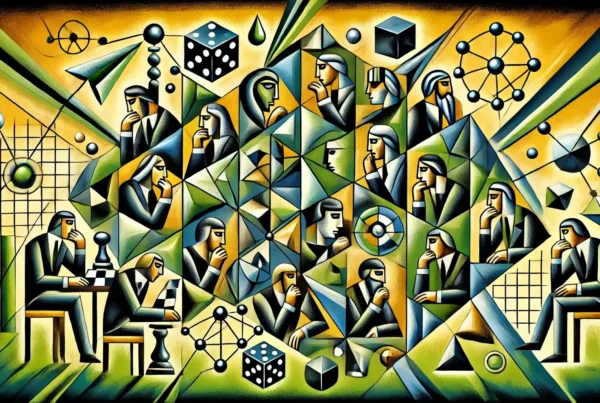Scientific discovery often involves unraveling the unseen, uncovering particles, forces, and principles that define the fabric of our universe. Among these groundbreaking achievements, the discovery of the Higgs Boson stands as a testament to human curiosity and perseverance. Confirmed by the CERN Large Hadron Collider (LHC) in 2012, the discovery of the Higgs Boson provided the missing piece to the Standard Model of particle physics, a framework that describes how fundamental particles interact to create matter and energy.
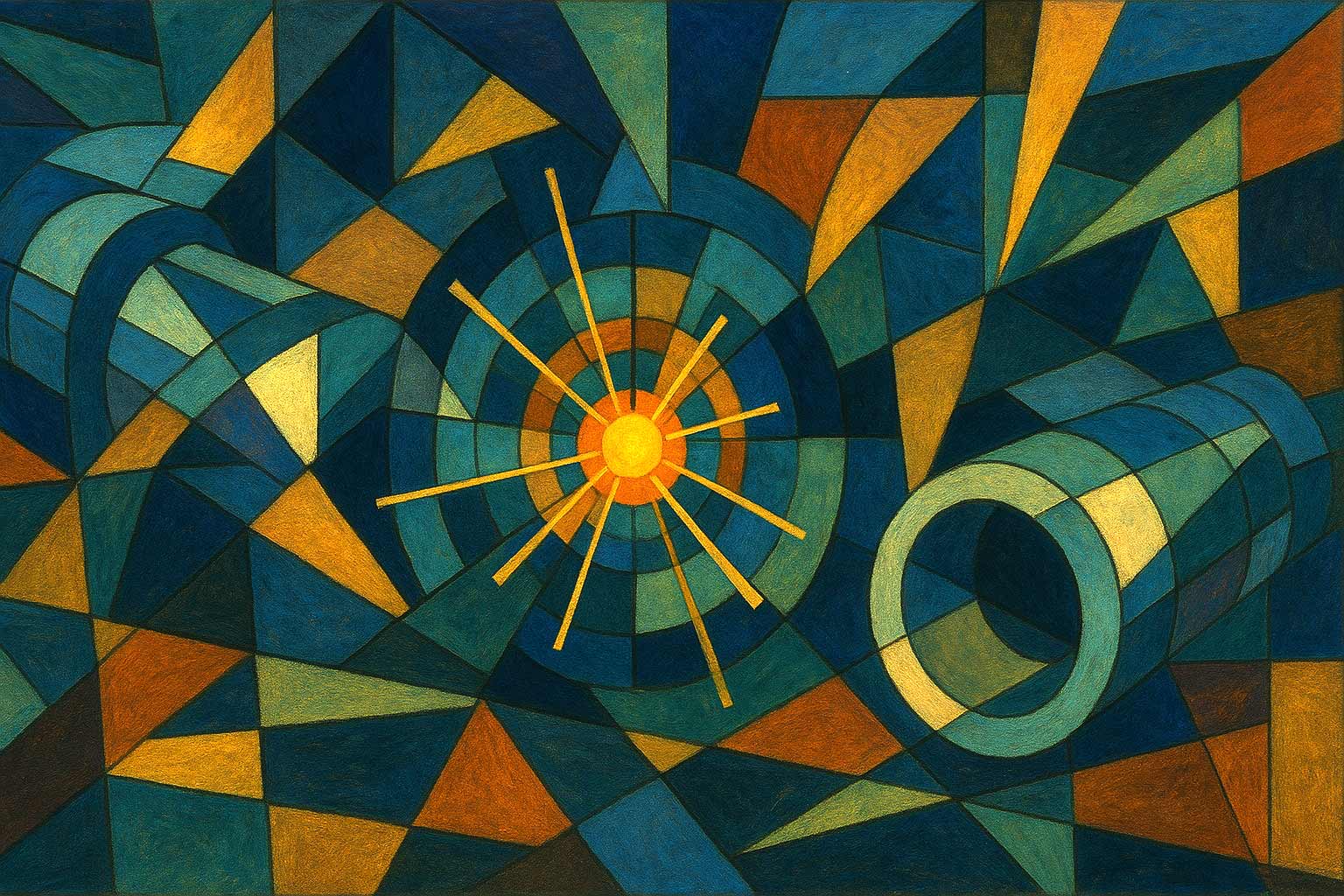
As part of the Klypup Celebrates series, we honor the discovery of the Higgs Boson through a Picasso-inspired Cubist composition. This artwork captures the complexity of particle physics through fragmented geometric forms, layered textures, and vibrant colors. The depiction of the CERN accelerator tube, represented by swirling, concentric shapes, symbolizes the relentless quest to explore the universe at its most fundamental level.
Why Klypup Celebrates the Discovery of the Higgs Boson
The discovery of the Higgs Boson, also known as the “God Particle,” was a monumental milestone in understanding how particles gain mass. Proposed by Peter Higgs and others in 1964, the Higgs mechanism suggested that a pervasive field exists throughout the universe, interacting with particles to endow them with mass. Without this mechanism, the universe would be a chaotic, massless expanse where matter could not form structures or sustain life.
The confirmation of the Higgs Boson’s existence in 2012 was the result of decades of theoretical research and technological innovation. Using the Large Hadron Collider (LHC)—the most powerful particle accelerator ever built—scientists were able to generate conditions that replicated the early universe, allowing them to observe the elusive particle. It was an achievement rooted in precision, collaboration, and cutting-edge engineering.
For Klypup, a company dedicated to cloud automation and optimization, the discovery of the Higgs Boson is a profound reminder of the importance of breaking down complexity to uncover fundamental truths. Just as the LHCaccelerates particles to near-light speeds to reveal the building blocks of the universe, Klypup strives to accelerate digital systems through seamless automation and optimization.
Depicting the discovery of the Higgs Boson through Picasso’s Cubist style is a deliberate choice. The fragmented forms, intersecting planes, and layered compositions represent the intricate and overlapping nature of subatomic particles and their interactions. The presence of the CERN accelerator tube within the composition highlights the technological marvel that enabled this discovery.
In the world of Generative AI and advanced computing, the principles that led to the discovery of the Higgs Boson are mirrored in how algorithms analyze, synthesize, and generate complex data. Systems built upon deep learning models function by deconstructing input data into essential components, much like how the LHC dissects matter at its most fundamental level.
For Klypup, the discovery of the Higgs Boson represents the culmination of inquiry, innovation, and technological precision. It serves as a metaphor for how seemingly abstract concepts can be harnessed to create practical, groundbreaking solutions.
Conclusion
Klypup Celebrates is more than a tribute series; it is a recognition of the technological and scientific breakthroughs that continue to shape our world. The discovery of the Higgs Boson is a testament to humanity’s relentless pursuit of knowledge and the power of collaboration.
Through this tribute, Klypup acknowledges the ingenuity of the scientists and engineers who made this discovery possible. By visually representing the Higgs Boson’s discovery through Cubist-inspired art, Klypup emphasizes its commitment to uncovering deeper insights within complex systems.
Just as the Higgs Boson completes the Standard Model, Klypup strives to bring coherence and efficiency to the digital world through advanced automation. The Klypup Celebrates series reflects our belief that true innovation emerges from the convergence of creativity, precision, and determination.
